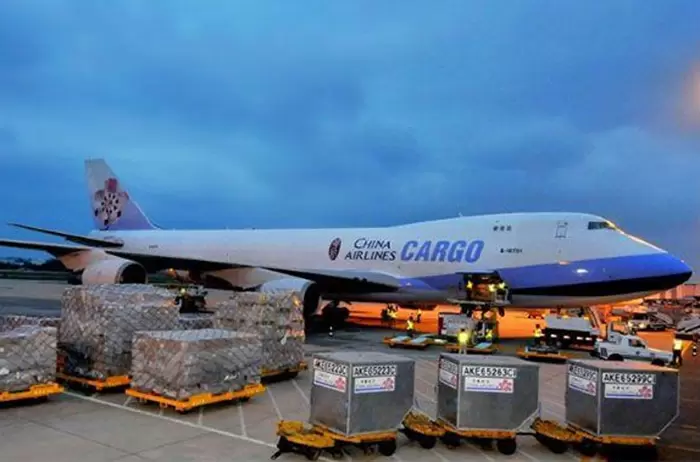Global Momentum in International Air Freight Logistics Service
Understanding the Core Functions of International Air Freight Logistics
International air freight logistics forms a critical backbone of global trade, enabling time-sensitive goods to move rapidly across continents. Unlike general cargo transport, air freight operations integrate aviation regulations, customs frameworks, temperature-controlled handling, airport coordination, and multimodal transfers. Understanding these core functions helps businesses evaluate whether air transport aligns with their supply chain model.
At its core, the service involves shipment planning, cargo consolidation, airway bill preparation, security screening, capacity booking, and destination distribution. The complexity of these procedures requires strict compliance with global standards such as IATA regulations, ICAO safety protocols, and country-specific customs rules. In this blog post, Balance Logistics Inc., as a professional air cargo shipping service provider, will share insights on global momentum in international air freight logistics service.
Evolving Demand for Air Freight Logistics Service
Demand for international air freight logistics service continues to shift as industries diversify and customers require faster replenishment cycles. High-value sectors—electronics, pharmaceuticals, fashion, automotive parts—traditionally rely on air services for predictable lead times. However, a broader range of SMEs, e-commerce merchants, and temperature-sensitive product suppliers are now turning to air freight when market volatility requires rapid delivery.
This transformation is not driven solely by speed; it reflects deeper economic changes, including decentralized manufacturing, near-shoring, and fluctuating inventory strategies. Air freight is gradually becoming a stabilizing mechanism for supply chains disrupted by geopolitical events, seasonal surges, and unpredictable maritime schedules.
How Air Freight Forwarding Services Integrate Global Networks
Modern air freight forwarding services rely on a networked ecosystem that links airlines, airports, ground handlers, trucking partners, and digital platforms. Rather than functioning as simple intermediaries, freight forwarders now orchestrate real-time coordination across international hubs.
Their role includes route design, cargo prioritization, cross-border documentation, load optimization, and proactive exception management. With the rise of digital freight forwarding, shipment visibility, predictive ETAs, and automated customs declarations have become standard expectations.
Shift Toward Digital International Air Cargo Service
Digitalization is one of the most significant changes influencing international air cargo services. Online booking platforms, AI-powered forecasting tools, and electronic airway bills (eAWB) are replacing traditional manual workflows.
Technology enables airlines and forwarders to optimize cargo capacity based on historical patterns, weather forecasts, and commodity types. For shippers, digital platforms reduce booking time, lower communication barriers, and allow continuous tracking from warehouse pickup to final delivery.
In addition, big data analysis helps predict demand spikes—such as those driven by global product launches or medical supply emergencies—allowing logistics providers to secure capacity in advance.

Sustainability Pressures Transforming Air Freight Logistics
Sustainability has become a pivotal consideration within international air freight logistics. Although aviation is energy-intensive, the industry is adopting measurable strategies to reduce environmental impact. Airlines are increasing their use of sustainable aviation fuel (SAF), redesigning flight routes to minimize fuel burn, and replacing older aircraft with fuel-efficient models.
Forwarders are incorporating carbon-reporting tools, enabling shippers to compare emissions across transport modes. Some logistics providers offer hybrid models—combining air freight with rail, sea-air solutions, or carbon-offset programs—to balance speed and sustainability.
Air Freight Custom Procedures and Global Trade Compliance
International air freight logistics service requires meticulous adherence to customs regulations. Smooth clearance depends on accurate declarations, HS code classification, country-specific import rules, and compliance with security protocols such as CBP, EU ICS2, and advanced cargo information systems.
Trade compliance specialists play an essential role in mitigating risks associated with delays, penalties, or shipment rejections. Companies often face challenges with dual-use goods, restricted pharmaceuticals, or time-critical perishables that require pre-clearance procedures.
As global regulations evolve, logistics providers must continuously update their compliance frameworks to match new trade agreements and inspection standards.
Unique Challenges in Global Air Freight Logistics Operation
While air freight is fast, numerous challenges must be managed behind the scenes. These include:
Airport congestion during peak seasons or emergency events
Limited aircraft capacity on high-demand international routes
Weather-related disruptions affecting flight schedules
Security inspections that vary from one region to another
Packaging requirements for lithium batteries, perishables, or fragile cargo
Last-mile coordination in destinations with complex infrastructure
These challenges underline the importance of contingency planning, diversified routing, and strong partnerships with airlines and ground handlers.
Strategic Use of International Air Freight Solutions for Business Growth
Rather than treating air freight as an expensive last-resort option, many companies now incorporate it strategically into their global supply chain design. For example:
Fashion brands use air freight for fast replenishment when trends shift unexpectedly.
Automotive manufacturers rely on air transport to prevent production line stoppages caused by missing components.
Pharmaceutical suppliers choose temperature-controlled air cargo to preserve drug quality and meet regulatory standards.
Cross-border e-commerce sellers use air freight to maintain competitive delivery times in global markets.
These strategic applications demonstrate how air freight contributes to supply chain resilience and market responsiveness.
Future Outlook for International Air Freight Logistics Service
Looking ahead, the international air freight sector is expected to evolve in several directions. Autonomous ground handling equipment, AI-driven capacity planning, low-emission aircraft, and blockchain-based documentation systems are being adopted at a faster pace.
Global trade lanes may continue to shift as geopolitical dynamics reshape manufacturing footprints. Additionally, consumer expectations for near-instant delivery will push logistics providers to strengthen air-road multimodal solutions and expand regional air freight hubs.
In the long term, the combination of technology, policy support, and sustainable aviation development is likely to redefine the efficiency, accessibility, and environmental impact of air freight.
Conclusion
International air freight logistics service is undergoing profound transformation, shaped by digital innovation, sustainability pressures, evolving global trade patterns, and new customer requirements. Rather than focusing solely on speed, modern air freight represents a dynamic, data-driven logistics system that supports global commerce in complex and unpredictable environments.
Businesses that understand emerging trends and strategically integrate air freight into their supply chain planning will gain greater flexibility, resilience, and global reach.




